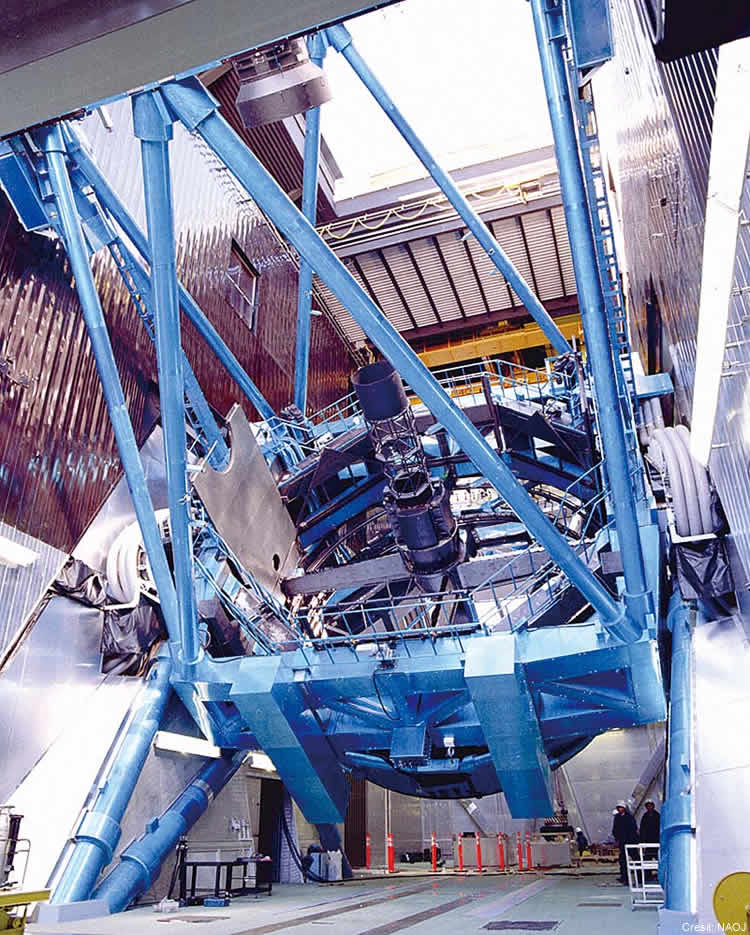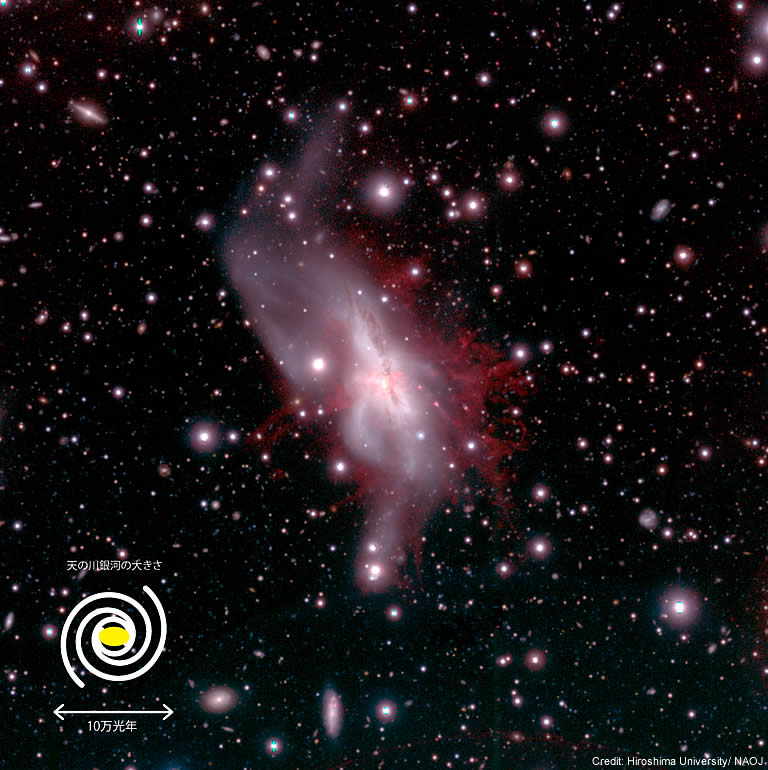About Subaru Telescope
Subaru Telescope is a Japanese observatory located in Hawai`i that observes the sky in visible to mid-infrared light.
With a worldclass aperture of 8.2 meters, the Subaru Telescope is located near the summit of Maunakea on Hawai'i Island, where observatories operated by over 10 countries have congregated to take advantage of the excellent observing conditions there and engage in both cooperative research and a competitive race to discovery. Astronomers from all over the world come to conduct open-use observations, and the construction of new observational instruments is proceeding through international collaboration. The themes driving our research pique everyone’s curiosity: the processes of stellar and planetary birth and evolution; the history of galaxies as large collections of stars and planet; and the dark matter and dark energy that are invisible to current observational techniques.
It has been over quarter of a century since the telescope’s first light, and the onsite staff is working day and night on different assignments to achieve even greater results. From objects as hot as stars down to the low temperature radiation which tells the story of the early Universe, we continue to explore the mysteries of the Universe. Please watch our results releases on our webpage and other sources for discoveries from the skies of Hawai'i, which are connected to the skies you look up at every night.
Subaru Telescope and its Observation Images

The Subaru Telescope observes electromagnetic waves over a wide range of visible to i nfrared (wavelengths from 0.3 to 30 micrometers) to produce sharp images. The multiple distinctive instruments can perform a variety of observations, including spectroscopy on light from distant celestial objects.

A pseudo-color image of a starburst galaxy NGC 6240 Its star formation rate is estimated to be 25-80 times that of our galaxy. Blue, green, and red colors are attributed to the B-band, R-band, and H-alpha (emission line from ionized hydrogen gas) images, respectively. The giant ionized gas blown out from the galaxy is seen in red. (Credit:Hiroshima University/NAOJ)